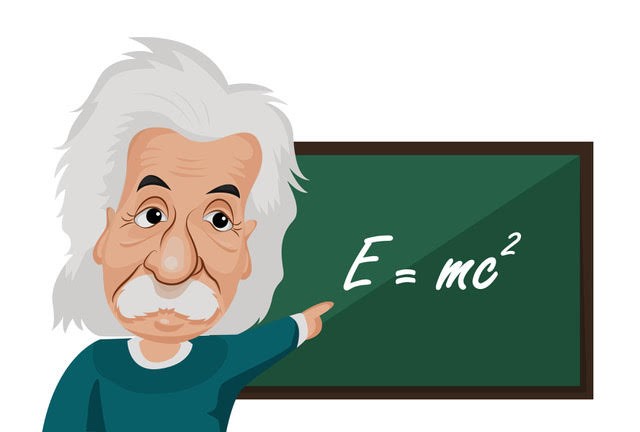Face fractions
The purpose of this activity is for students to apply equivalent fractions and fractions as operators. The context is about maintaining proportionality of features on a face with reference to the total length of the face.
This activity assumes the students have experience in the following areas:
- Multiplying and dividing whole numbers.
- Finding fractions of whole number amounts.
- Measure lengths with metric units.
The problem is sufficiently open ended to allow the students freedom of choice in their approach. It may be scaffolded with guidance that leads to a solution, and/or the students might be given the opportunity to solve the problem independently.
The example responses at the end of the resource give an indication of the kind of response to expect from students who approach the problem in particular ways.
Drawing faces is a lot easier if you know about proportions. The following diagram provides guidelines for the positioning of the facial features.

- Now calculate the proportions for these famous portraits. Do the proportions match the guidelines?
- Photograph your face side on. Do the proportions of your face match those on the diagram? Explain your answers, using measurements and calculations.
- Here is a caricature of Albert Einstein. Are his facial features in proportion? Why do you think the artist has drawn him this way?

The following prompts illustrate how this activity can be structured around the phases of the Mathematics Investigation Cycle.
Make sense
Introduce the problem. Allow students time to read it and discuss in pairs or small groups.
- Do I understand the situation and the words? (Students may need support to understand the meaning of proportions, part-whole relationships expressed as fractions.)
- Do the numbers in the diagram make sense? (Pay particular attention to students’ understanding of unit fractions.)
- How do I expect the proportions to always be exactly right? Why, or why not?
- Does the cartoon of Einstein look proportional? What feature seems to be larger? Why might the artist have done that?
- Do I expect there to be a pattern?
- What will my solution look like? (The solution will be a record of the proportions for each portrait and a judgement about whether, or not, the proportions are correct.)
Plan approach
Discuss ideas about how to solve the problem. Emphasise that, in the planning phase, you want students to say how they would solve the problem, not to actually solve it.
- What strategies will be useful to solve a problem like this? (Using copies of the portraits to draw and write on will be useful.)
- What measurements will I use to check the proportions?
- How will I calculate the fractions for each face? What operation will I need to do? (Some students may not know that a/b can be calculated as a ÷ b.)
- What tools (digital or physical) could help my investigation? (Calculators will be useful especially scientific calculators that can process fractions. Rulers will be needed to measure the lengths on each portrait.)
Take action
Allow students time to work through their strategy and find a solution to the problem.
- Have I shown my workings in a step-by-step way?
- Is my recording systematically organised?
- Have I chosen proportions that best represent the overall look of each face?
- Are my calculations correct? How can I check?
- Do the calculated proportions match what I see visually?
- Do others have better ways to solve the problem?
Convince yourself and others
Allow students time to check their answers and then either have them pair share with other groups or ask for volunteers to share their solution with the class.
- Is my working clear for someone else to follow?
- Did I try enough cases (proportions) to be confident in my results?
- How would I convince someone else I am correct?
- Are my results expressed in a mathematical way? Have I used fractions and shown how I calculated those fractions?
- Would my strategy work in a different situation? Could it be applied to pictures of animals, for example?
- Is there some mathematics I need to learn to solve similar problems?
Examples of work
Work sample 1
The student uses visual perception or fractions as operators to see if the lengths match the desired measures.
Students who operate procedurally are likely to rely on their perception of each image and describe whether, or not, the proportions of the face ‘look right’. They may use the fractions between features of the face as operators on the total length of each face. They will compare the length found by calculation with the lengths on the portrait. Note that the total length of the face will depend on scaling of the image.
Click on the image to enlarge it. Click again to close.
Work sample 2
The student uses knowledge of equivalent fractions or ratios to check whether or not the measures are in proportion.
Students who work conceptually will create fractions of measures between features (numerators) and the total measure of face length (denominator). They will use their knowledge of equivalence combined with qualitative adjustment to decide how close the measures on the portraits match the desired proportions. Qualitative adjustments are likely to be small changes to numerator or denominators to make simplification easier, with awareness of the effect of the adjustment on the fraction, e.g. reducing the numerator reduces the size of the fraction.
Click on the image to enlarge it. Click again to close.
Some students may organise the desired proportions into ratio form. They may create a standard ratio and enlarge the picture, so the total length is a convenient multiple of the number of parts in the ratio.
Click on the image to enlarge it. Click again to close.
Expect conceptually orientated students to realise that real faces vary a bit from the desired proportions, but these students have a sense of when the variation is unreasonable. With the Einstein caricature they should note that Einstein’s nose is almost one third of the face length, rather than one quarter. As a result, his chin to mouth length is less than one quarter. His eyes are set half way down the face which is surprising. Intelligent people are often depicted to have disproportionately large foreheads.